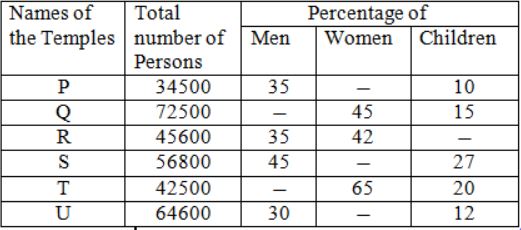 Introduction
Introduction
What is Quantitative Aptitude test?
Quantitative Aptitude is one of the prominent competitive aptitude subjects which evaluates numerical ability and problem solving skills of candidates. This test forms the major part of a number of important entrance and recruitment exams for different fields. The Quantitative Aptitude section primarily has questions related to the Simplification, Numbering Series, and Compound Interest, etc.
A candidate with quantitative aptitude knowledge will be in a better position to analyse and make sense of the given data. Quantitative Aptitude knowledge is an important measure for a prospective business executive's abilities.
The article IBPS Clerk Numerical Ability Quiz 6 provides Quantitative Aptitude questions with answers useful to the candidates preparing for Competitive exams, Entrance exams, Interviews etc.
 Quiz
Quiz
1. In how many different ways can the letters of the word "CANDIDATE" be arranged in such a way that the vowels always come together?
- A. 4320
B. 1440
C. 720
D. 840
- A. 72
B. 144
C. 532
D. 36
- A. 15 years
B. 24 years
C. 17 years
D. 19 years
- A. 20 years
B. 27 years
C. 23 years
D. 25 years
- A. 7 : 8
B. 1 : 4
C. 2 : 5
D. 5 : 6
1. Sum of six consecutive numbers that are divisible by 3 is 99. Find the sum of the first two numbers.
- A. 30
B. 21
C. 14
D. 15
- A. 150
B. 1500
C. 300
D. 3000
- A. 27
B. 22
C. 24
D. 20
- A. 2
B. a + 3
C. a
D. a + 4
- A. 567
B. 756
C. 874
D. 784
Direction[1-5]: Study the following table carefully and answer the questions given below:
The number of persons visiting six different temples and percentage of Men, Women and Children visiting those temples
1. The number of men visiting Temples S are approximately what percent of the total number of person visiting all the temples together?- A. 8%
B. 12%
C. 10.5%
D. 15%
- A. 54.5%
B. 44.5%
C. 64.5%
D. 67.5%
- A. 62523
B. 66358
C. 64323
D. 66323
- A. 25692
B. 25212
C. 25292
D. 22292
- A. 6325 : 6384
B. 6325 : 6383
C. 6325 : 6385
D. 6325 : 6388






